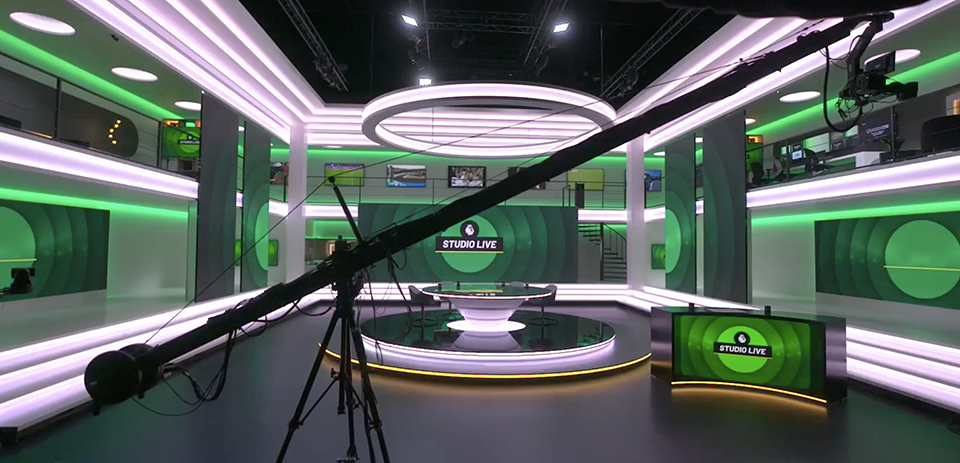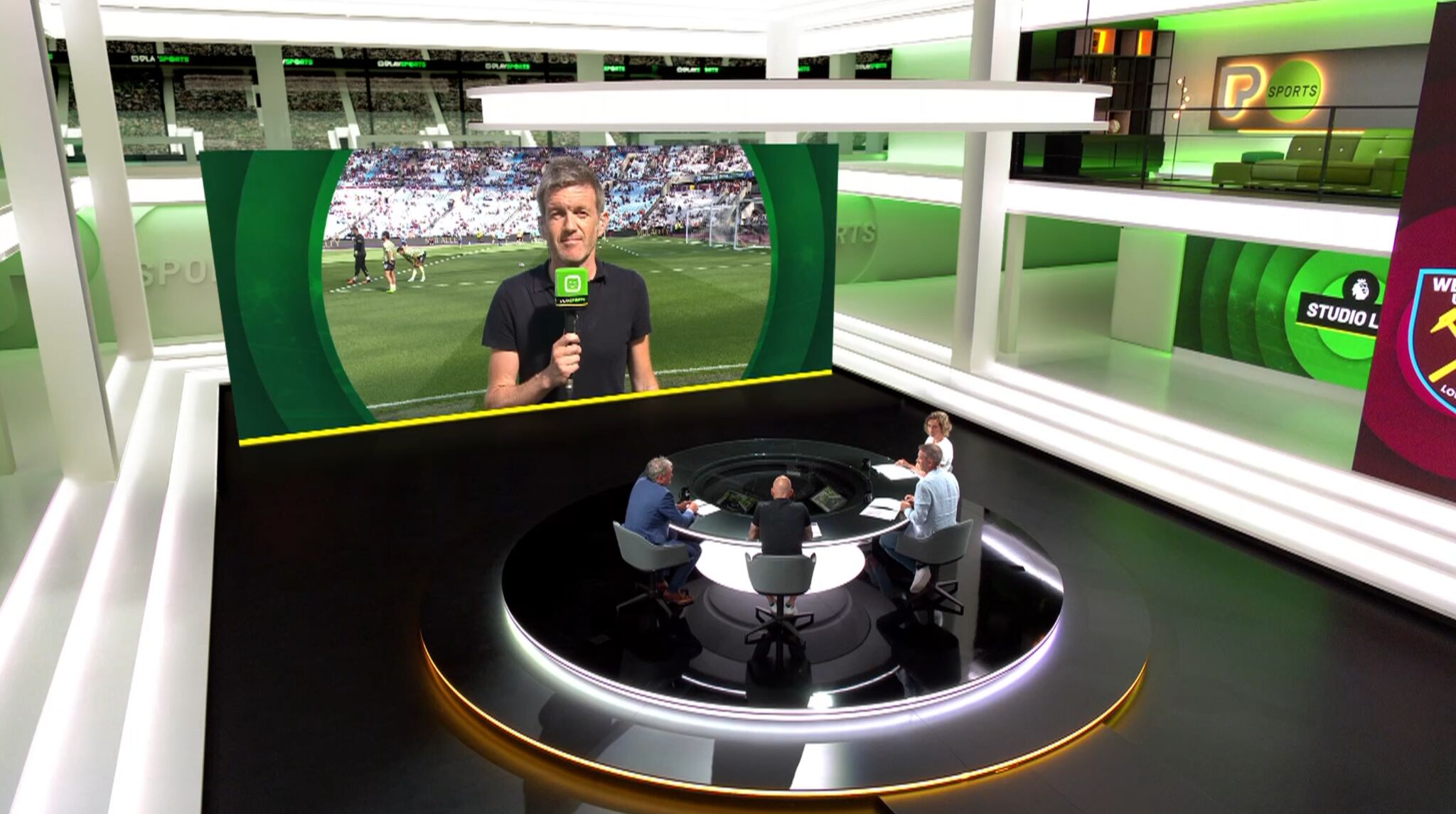Play Sports builds ‘House of Sports’ that blends scenery, extended reality

Subscribe to NCS for the latest news, project case studies and product announcements in broadcast technology, creative design and engineering delivered to your inbox.
Flemish sports channel Play Sports has debuted an impressive studio it labels as the “best multi-sport studio in Europe.”
The network, which is owned by Telenet, spent two years developing the physical space, which it has dubbed the “House of Sports.”
The new studio combines a box-like physical space – stocked full of LED video walls with virtual set extensions and augmented reality elements.

The clean, futuristic design has a bit of a virtual set-like feel to it — but the majority of what viewers see is real, hard scenic, including a central area wrapped in steps featuring bright integrated lighting tucked under the risers. Play Sports notes the idea was to create a future-proof set that prioritizes storytelling without a bunch of gimmicks.
In the center of the studio is a circular anchor desk with an internally lit right above it. The desk’s primary background is a seamless LED video wall with a spiral staircase and a small work area tucked behind it. Additional floor-to-ceiling LED video towers are installed on either side of the desk.
The core space is also wrapped with a U-shaped working mezzanine, which can be used as a workspace and on-air positions.
Capping off the atrium-like space is a multi-tiered stepped element that, in many ways, feels like a mirror image of the stairs below.

On either side of the space is an alcove with an additional LED video wall set back from the stairs.
These can be used, along with the LED towers, for standup shots that allow the network to showcase team logos and key states or information in the same shot.

During the design process, special attention was made to create multiple shooting venues and interaction between talent in different parts of the studio, including the ability to toss from the anchor desk to the mezzanine level.

This space includes a camera position that uses the work area behind as a background while also incorporating the dramatically lit walls, rows of screens and a video panel mounted on a thin black frame positioned as an OTS element.
In addition, a smaller, curved anchor desk is available, while the purposefully designed open concept allows the network to create other setups and shooting options.

In addition to the alcoves, there are additional, narrower physical spaces behind the LED video wall and towers with wall mounted video panels. While the walls are finished in white, the studio has hidden lighting elements that allow the network wash the walls with color, often its trademark green — though it’s possible to change colors of the entire set or sections of it individually.
Similar lighting accents have been installed behind LED panels, including the ones in the alcoves, as well as the wall mounted ones ringing the space.

These areas can also be shot using a “walk and wander” floating “video on video” shots with AR layers added in, including the ability to insert stat boards that appear to be sitting on the stairs and player image on another level.

AR can also be inserted into the glass desk, including field layouts with player position labels.

In addition, there’s the option to use a reverse shot that incorporates more extensive mixed reality in the form of AR set extensions and a virtual video wall that can be used for tossing to remotes.
While the giant virtual screen dominates the view, the network also extends the risers and double height ceiling across the fourth wall — while also creating the illusion of two open hallways backed with a wall featuring oversized dimension logos integrated into the walls and accented with the lighting wash.
In lieu of the balcony, the virtual set extension appears to be double-height here — with simulated windows that can showcase stadium and other views.

When the virtual screen isn’t shown in that space, there’s a much wide digital canvas for inserting augmented reality graphics, which can reveal an additional, lower wall that features a virtual, stadium-style opening to the field beyond with the option to include a vertical graphics panel in the middle.
While much of what’s added to the fourth wall is computer-generated, there’s no green screen used on the set — instead it’s all inserted with the help of camera tracking and augmented reality technology.
Play Sports, however, notes a careful consideration for when to use augmented reality to ensure it has a defined purpose inside the studio.
Project Vendors
- Set design and lighting design by Arf & Yes: Giovani De Schampheleire, Berit Struylaart and Bert Leman
- Technology integration by EMG Belgium and Vidi Square
- Graphic support from Boost Graphics
- Vizrt
Subscribe to NCS for the latest news, project case studies and product announcements in broadcast technology, creative design and engineering delivered to your inbox.





tags
Arf & Yes, Berit Struylaart, Bert Leman, EMG Belgium, Giovani De Schampheleire, Play Sports, Telenet, Vidi Square, virtual set extensions, Vizrt
categories
Augmented Reality, Virtual Production and Virtual Sets, Heroes, International Set Design, Set Design